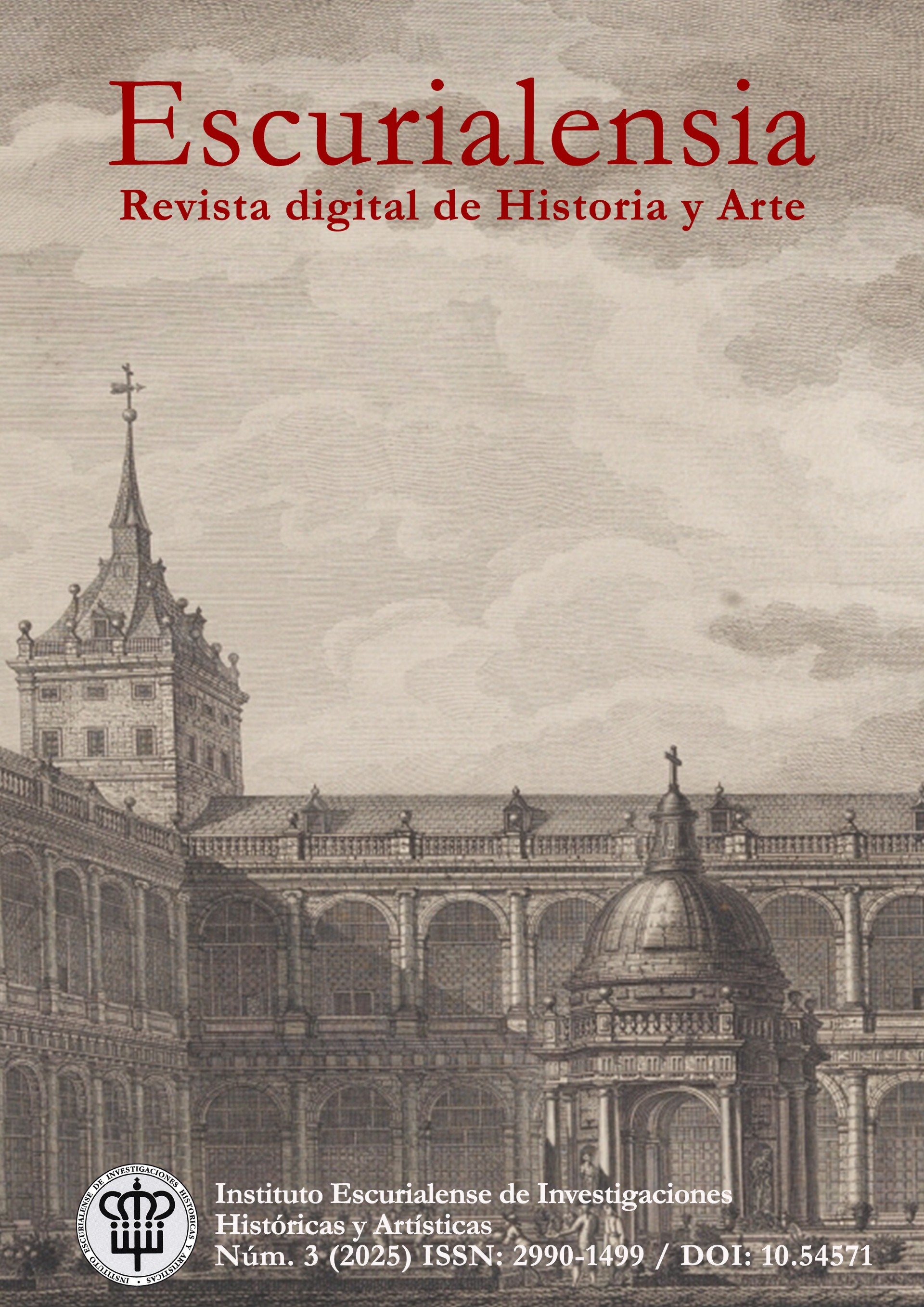Iconography of de Nativity: Childbirth with pain
Iconography of de Nativity: Childbirth with pain
DOI:
https://doi.org/10.54571/erdha.707Keywords:
Birth of Jesus, Renaissance iconography, painless childbirth, adorationAbstract
The present work is a continuation of the one published in the previous edition of the magazine Escurialensia, in which we address the first variant on the iconography of the Nativity, which alludes to the birth of Jesus with a natural birth, that is, with pain, a formula that was interpreted from the 4th to the 15th century. After studying the narrative sources of the cycle of Christianity, we continue analyzing the other iconographic variant such as painless childbirth, from the moment in which new considerations are launched at the Council of Trent (1545 and 1563) where the Fathers of the Church will defend the Revelations of Saint Brigid of Sweden and the Pseudo Bonaventure, which will change the iconographic canons of the representations of the Nativity, starting to consider that it is not a birth, but of a birth, in this way the controversy ends as Mary does not suffer human nature.
References
- ANGULO ÍÑIGUEZ, D. Pintura del Renacimiento en Ars Hispaniae, Madrid 1954, t. XII, pp. 290-295.
- ANTONIO SÁENZ, T. de, “Los pintores españoles del siglo XVI y el Greco” en Actas del Simposium El Monasterio de El Escorial y la pintura, San Lorenzo de El Escorial, Patrimonio Nacional, 2001, pp. 213-242.
- ANTONIO SÁENZ, T. de, Pintura española del último tercio del siglo XVI en Madrid: Juan Fernández de Navarrete, Luis de Carvajal y Diego de Urbina, Tesis doctoral, Madrid, Universidad Complutense, 1987.
- AZCÁRATE, J. Mª, Pintura gótica del siglo XV en Historia del Arte, Anaya, Madrid 1986.
- AMO MAYORGA, L. Mª. de, “Iconografía de la Natividad I. Ciclo de la Navidad o encarnación”, en Arte, religiosidad y tradiciones populares. Instituto Escurialense de Investigaciones Históricas y Artísticas. San Lorenzo de El Escorial 2009, pp. 233-252.
- Bartolomé Esteban Murillo (1617-1682), Catálogo de la exposición, Ministerio de cultura, 1982.
- BROWN, J., The Golden Age of Painting in Spain, New Haven, Yale, University Press, 1991.
- BERNAL NAVARRO, J. C., Representación iconográfica de la vida de María la Virgen. Editorial Universidad Politécnica de Valencia, 2020.
- CIRLOT, E., Pintura gótica europea. Barcelona, 1967
- DÍAZ DÍAZ, T., “El entierro de San Lorenzo”, posiblemente el mejor cuadro de Juan Fernández Navarrete “El Mudo” (Padre Sigüenza). en Actas del Simposium El Monasterio de El Escorial y la pintura, San Lorenzo de El Escorial, Patrimonio Nacional, 2001, pp. 561-580.
- GÓMEZ GÓMEZ, A., “La iconografía del parto en el arte románico hispano”, en Príncipe de Viana, n, 213. Pp. 79-102.
- MULCAHY, R., Juan Fernández de Navarrete el Mudo, pintor de Felipe II, Madrid. Sociedad Estatal para la Conmemoración de los Centenarios Felipe II y Carlos V, 1999.
- Museo Nacional del Prado, Museo del Prado: pintura italiana anterior a 1600, Gredos, Madrid, 1979, pp.226.
- PÉREZ HIGUERA, Mª T., “La Navidad en el arte medieval. Madrid, Encuentro, 1997, pp. 106, 129 y 135. Las revelaciones de Santa Brígida, p. 133.
- PÉREZ SÁNCHEZ, A. E., “Sobre los pintores de El Escorial”, en Goya n. 56-57, 1963, pp. 148-153.
- PÉREZ SÁNCHEZ, A. E., La pintura toledana contemporánea de El Greco, en El Toledo de El Greco (Catálogo de la exposición), Madrid, 1982
- RUÍZ MANERO, J. M., Los Bassano en España, Fundación Universitaria Española, Madrid, 2011, pp. 44-46, nº1J; p. 477,
- SANTA BIBLIA, Ed. Paulinas, 1991.
- VVAA., Pintura del siglo XVII En Ars Hispaniae, t. XV, Madrid, 1971.
- WEISBACH, W., Reforma religiosa y arte medieval. Madrid 1949, p. 87.
- WETHEY, Harold, E., El Greco y su escuela (Volumen II), Ediciones Guadarrama, Madrid, 1967.
- YARZA LUACES, J. “Aspectos iconográficos de la pintura de Juan Fernández de Navarrete, el Mudo, y relaciones con la Contrarreforma” en Boletín del Seminario de Historia del Arte y Arqueología de la Universidad de Valladolid (BHAAV) (1970) pp. 43-68.
- YARZA LUCACES, J., “Navarrete el Mudo y el Monasterio de la Estrella”, en BHAAV (1972), pp. 251-257.
- VORÁGINE, S. de la, La Leyenda Dorada, Madrid 1989, cap. VI, pp. 52-58.
Downloads
Published
How to Cite
Issue
Section
License
Copyright (c) 2025 Teresa Díaz Díaz

This work is licensed under a Creative Commons Attribution-NonCommercial-ShareAlike 4.0 International License.
https://creativecommons.org/licenses/by-nc-sa/4.0/legalcode.es







